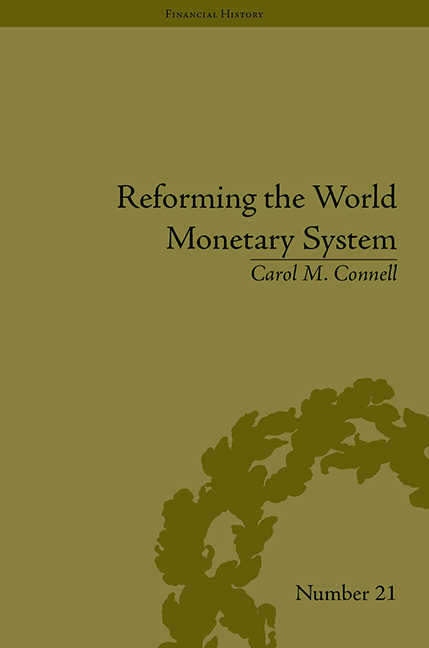Book contents
- Frontmatter
- Contents
- Acknowledgements
- List of Figures and Tables
- Introduction
- 1 A Crisis in Confidence
- 2 Fritz Machlup, his Research and Methodology
- 3 Robert Triffin and the Triffin Plan
- 4 William Fellner and the Intersection of Macro and Microeconomics
- 5 Why Economists Disagree: The Role of Framing in Consensus Building
- 6 ‘Assuring the Free World's Liquidity’ through Multiple Reserve Currencies
- 7 Milton Friedman and the Arguments for Flexible versus Fixed Exchange Rates
- 8 Collaboration with the Group of Ten
- 9 Adjustment Policies and Special Drawing Rights: Joint Meetings of Officials and Academics
- 10 From the Bellagio Group to the Bürgenstock Conferences
- 11 From the Bellagio Group and Joint Conferences of Officials and Academics to the Group of Thirty
- 12 Reassessing the Bellagio Group's Impact on International Monetary Reform
- 13 The Impact of the Bellagio Group on International Trade and Finance Scholarship from the 1960s to the Present
- Conclusions
- Notes
- Works Cited
- Index
Conclusions
- Frontmatter
- Contents
- Acknowledgements
- List of Figures and Tables
- Introduction
- 1 A Crisis in Confidence
- 2 Fritz Machlup, his Research and Methodology
- 3 Robert Triffin and the Triffin Plan
- 4 William Fellner and the Intersection of Macro and Microeconomics
- 5 Why Economists Disagree: The Role of Framing in Consensus Building
- 6 ‘Assuring the Free World's Liquidity’ through Multiple Reserve Currencies
- 7 Milton Friedman and the Arguments for Flexible versus Fixed Exchange Rates
- 8 Collaboration with the Group of Ten
- 9 Adjustment Policies and Special Drawing Rights: Joint Meetings of Officials and Academics
- 10 From the Bellagio Group to the Bürgenstock Conferences
- 11 From the Bellagio Group and Joint Conferences of Officials and Academics to the Group of Thirty
- 12 Reassessing the Bellagio Group's Impact on International Monetary Reform
- 13 The Impact of the Bellagio Group on International Trade and Finance Scholarship from the 1960s to the Present
- Conclusions
- Notes
- Works Cited
- Index
Summary
This final chapter of the book first summarizes the conclusions drawn from each chapter, before returning to the initial questions and hypotheses raised in the Introduction. The chapter ends with a few overarching conclusions.
Chapter 1 argued that the Great Depression and World War II – both problems and goals for the future – influenced how economists thought about policy, inflation, interest rates, deficits and government intervention. Policymakers had a complicated relationship with their former allies and enemies as their world became more interdependent and appeared to require some kind of collective action. The Bretton-Woods Agreement, which had created the current monetary system as well as supranational institutions like the IMF, the OEEC (now OECD) and the World Bank, continued to play an important role in the development of solutions to payments imbalance and liquidity issues. Tensions began to build as US policies jeopardized confidence in the dollar, the primary medium of international trade, even as Europe and Japan were experiencing rapid economic growth. Economists in Europe and the USA were exploring solutions that included wholesale system change. An announcement by US Treasury Secretary Douglas Dillon set a series of monetary system studies in motion by the IMF and Group of Ten – and also by Machlup, Triffin and Fellner, leaders of the Bellagio Group.
- Type
- Chapter
- Information
- Reforming the World Monetary SystemFritz Machlup and the Bellagio Group, pp. 215 - 226Publisher: Pickering & ChattoFirst published in: 2014



